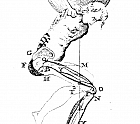IRP Focus: Imaging, Sensing & Networked Systems: Research Projects
Enabling Wireless Communications without Infrastructure

Sekhar Tatikonda, Dept. of Electrical Eng., Dept. of Statistics, Dept. of Comp. Sci.
In the modern world of wireless communications, a dynamic network is one where parameters change due to the mobility and traffic variations among users, and an ad hoc network is one in which devices organize themselves to create a wireless communication network. Dynamic ad hoc networks are highly useful in situations such as emergency rescue settings, military communications, sensor networks, and personal networking where only a lightweight infrastructure is possible, control of the network is not centralized, and there is a need for rapid deployment.
Interpreting and Quantifying Images with Computers

Hemant Tagare, Yale School of Medicine, Dept. of Biomedical Eng., Dept. of Electrical Eng.; Frederick Sigworth, Yale School of Medicine, Dept. of Biomedical Eng.; Hongwei Wang, Dept. of MB&B
Teaching a computer to understand and interpret an image is a difficult problem that engineers have long been trying to solve with sophisticated mathematics and computational power. The problem becomes especially challenging when the image is noisy, out of focus, or contains confusing extraneous information.
Application of Systems Engineering To Human Motor Control

Kumpati Narendra, Dept. of Electrical Eng.
Controlling the human body is a formidable task. It takes the newborn baby countless experiments with its limbs to acquire motor control skills needed to ambulate. Most people take for granted the ability to control movement, unless of course they are afflicted with a movement disorder.
Investigating Atomic Precision at the Oxide Interface

Eric I. Altman, Dept. of ChE & EnvE; Sohrab Ismail-Beigi, Dept. of Applied Physics, Dept. of Physics
For many materials scientists, what goes on at the interface between two different materials is where the excitement is. Long gone are the days when electronics developers glued materials together by hand. Today’s materials are sandwiched together with atomic-scale precision – an advancement that has led to the control of exotic solid-state phenomena, such as magnetism and superconductivity at the nanoscale and a promise of applications that will have broad-sweeping impact on the technologies of our time.

